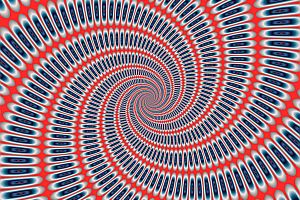 If you’ve ever felt the sensation of spinning or that the world is spinning around you, you’ve experienced what is sometimes called vertigo. It is most often due to a problem with the inner ear. The vestibular system in our inner ear is responsible for keeping us aware of where we are located in space. The vestibulocochlear nerve sends signals to the brain about our body’s balance and position, and if this system is disturbed in any way, vertigo is often the result.
If you’ve ever felt the sensation of spinning or that the world is spinning around you, you’ve experienced what is sometimes called vertigo. It is most often due to a problem with the inner ear. The vestibular system in our inner ear is responsible for keeping us aware of where we are located in space. The vestibulocochlear nerve sends signals to the brain about our body’s balance and position, and if this system is disturbed in any way, vertigo is often the result.
In addition to the spinning sensation, symptoms of vertigo include feelings of nausea, vomiting, sweating, difficulty standing, feeling unbalanced, headache, ringing in the ears or hearing loss, and abnormal or jerking eye movements.
Among the most common causes of vertigo are the following:
- Benign paroxysmal positional vertigo (BPPV) – Probably the most common cause of vertigo, particularly in those over age 60, BPPV is due to calcium carbonate particles called canaliths becoming dislodged and irritating the inner ear.
- Labyrinthitis or vestibular neuritis – Infections of the inner ear that are often due to a virus cause inflammation in the area of the vestibulocochlear nerve, sending inaccurate signals to the brain about the body’s position. This is why people with inner ear infections are often dizzy or walk in an unsteady manner.
- Ménière’s disease – A chronic inner ear disorder with symptoms including dizziness, tinnitus and hearing loss that can come and go.
- Migraine headaches – Vestibular migraines are migraines with vertigo involved, and those with balance disorders often have a family history of migraines.
- Stroke, tumor or multiple sclerosis – These are much less common causes of vertigo, involving problems with the brain and central nervous system.
One of the simplest treatments for BPPV is something known as a canalith repositioning procedure. This procedure moves the calcium particles out from the inner ear’s sensing tubes and into a different part of the inner ear where they cause no harm and are safely absorbed. Doctors, chiropractors and other therapists who are familiar with the procedure can perform the procedure in a matter of minutes.
One of the most commonly used of the procedures is called the Epley Maneuver. This treatment involves the patient lying on his or her back on a bed or table. The patient’s head should be hanging slightly over the edge and tilted 45 degrees toward the problem ear. The physician then moves the patient’s head into four different positions for a couple of minutes each until it is tilted 90 degrees toward the other ear. This procedure has been found to cure vertigo from BPPV approximately 90% of the time.
Vertigo due to inner ear infections will usually clear up once the infection is gone. Medicines are sometimes prescribed to help reduce symptoms of vertigo that are related to migraines or Ménière’s disease.

